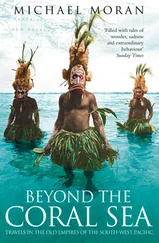Alexander von - Personal Narrative of Travels to the Equinoctial Regions of America (Vol.1-3)
Здесь есть возможность читать онлайн «Alexander von - Personal Narrative of Travels to the Equinoctial Regions of America (Vol.1-3)» — ознакомительный отрывок электронной книги совершенно бесплатно, а после прочтения отрывка купить полную версию. В некоторых случаях можно слушать аудио, скачать через торрент в формате fb2 и присутствует краткое содержание. Жанр: unrecognised, на английском языке. Описание произведения, (предисловие) а так же отзывы посетителей доступны на портале библиотеки ЛибКат.
- Название:Personal Narrative of Travels to the Equinoctial Regions of America (Vol.1-3)
- Автор:
- Жанр:
- Год:неизвестен
- ISBN:нет данных
- Рейтинг книги:3 / 5. Голосов: 1
-
Избранное:Добавить в избранное
- Отзывы:
-
Ваша оценка:
- 60
- 1
- 2
- 3
- 4
- 5
Personal Narrative of Travels to the Equinoctial Regions of America (Vol.1-3): краткое содержание, описание и аннотация
Предлагаем к чтению аннотацию, описание, краткое содержание или предисловие (зависит от того, что написал сам автор книги «Personal Narrative of Travels to the Equinoctial Regions of America (Vol.1-3)»). Если вы не нашли необходимую информацию о книге — напишите в комментариях, мы постараемся отыскать её.
Personal Narrative of Travels to the Equinoctial Regions of America (Vol.1-3) — читать онлайн ознакомительный отрывок
Ниже представлен текст книги, разбитый по страницам. Система сохранения места последней прочитанной страницы, позволяет с удобством читать онлайн бесплатно книгу «Personal Narrative of Travels to the Equinoctial Regions of America (Vol.1-3)», без необходимости каждый раз заново искать на чём Вы остановились. Поставьте закладку, и сможете в любой момент перейти на страницу, на которой закончили чтение.
Интервал:
Закладка:
The araguato of Caripe is a new species of the genus Stentor, which I have above described. It differs equally from the ouarine (S. guariba) and the alouate roux (S. seniculus, old man of the woods). Its eye, voice, and gait, denote melancholy. I have seen young araguatoes brought up in Indian huts. They never play like the little sagoins, and their gravity was described with much simplicity by Lopez de Gomara, in the beginning of the sixteenth century. "The Aranata de los Cumaneses," says this author, "has the face of a man, the beard of a goat, and a grave demeanour (honrado gesto.)" Monkeys are more melancholy in proportion as they have more resemblance to man. Their sprightliness diminishes, as their intellectual faculties appear to increase.
We stopped to observe some howling monkeys, which, to the number of thirty or forty, crossed the road, passing in a file from one tree to another over the horizontal and intersecting branches. While we were observing their movements, we saw a troop of Indians going towards the mountains of Caripe. They were without clothing, as the natives of this country generally are. The women, laden with rather heavy burdens, closed the march. The men were all armed; and even the youngest boys had bows and arrows. They moved on in silence, with their eyes fixed on the ground. We endeavoured to learn from them whether we were yet far from the Mission of Santa Cruz, where we intended passing the night. We were overcome with fatigue, and suffered from thirst. The heat increased as the storm drew near, and we had not met with a single spring on the way. The words si, patre; no, patre; which the Indians continually repeated, led us to think they understood a little Spanish. In the eyes of a native every white man is a monk, a padre; for in the Missions the colour of the skin characterizes the monk, more than the colour of the garment. In vain we questioned them respecting the length of the way: they answered, as if by chance, si and no, without our being able to attach any precise sense to their replies. This made us the more impatient, as their smiles and gestures indicated their wish to direct us; and the forest seemed at every step to become thicker and thicker. At length we separated from the Indians; our guides were able to follow us only at a distance, because the beasts of burden fell at every step in the ravines.
After journeying for several hours, continually descending on blocks of scattered rock, we found ourselves unexpectedly at the outlet of the forest of Santa Maria. A savannah, the verdure of which had been renewed by the winter rains, stretched before us farther than the eye could reach. On the left we discovered a narrow valley, extending as far as the mountains of the Guacharo, and covered with a thick forest. Looking downward, the eye rested on the tops of the trees, which, at eight hundred feet below the road, formed a carpet of verdure of a dark and uniform tint. The openings in the forest appeared like vast funnels, in which we could distinguish by their elegant forms and pinnated leaves, the Praga and Irasse palms. But what renders this spot eminently picturesque, is the aspect of the Sierra del Guacharo. Its northern slope, in the direction of the gulf of Cariaco, is abrupt. It presents a wall of rock, an almost vertical profile, exceeding 3000 feet in height. The vegetation which covers this wall is so scanty, that the eye can follow the lines of the calcareous strata. The summit of the Sierra is flat, and it is only at its eastern extremity, that the majestic peak of the Guacharo rises like an inclined pyramid, its form resembles that of the needles and horns* of the Alps. (* The Shreckhorner, the Finsteraarhorn, etc.)
The savannah we crossed to the Indian village of Santa Cruz is composed of several smooth plateaux, lying above each other like terraces. This geological phenomenon, which is repeated in every climate, seems to indicate a long abode of the waters in basins that have poured them from one to the other. The calcareous rock is no longer visible, but is covered with a thick layer of mould. The last time we saw it in the forest of Santa Maria it was slightly porous, and looked more like the limestone of Cumanacoa than that of Caripe. We there found brown iron-ore disseminated in patches, and if we were not deceived in our observation, a Cornu-ammonis, which we could not succeed in our attempt to detach. It was seven inches in diameter. This fact is the more important, as in this part of America we have never seen ammonites. The Mission of Santa Cruz is situated in the midst of the plain. We reached it towards the evening, suffering much from thirst, having travelled nearly eight hours without finding water. The thermometer kept at 26 degrees; accordingly we were not more than 190 toises above the level of the sea.
We passed the night in one of those ajupas called King's houses, which, as I have already said, serve as tambos or caravanserais to travellers. The rains prevented any observations of the stars; and the next day, the 23rd of September, we continued our descent towards the gulf of Cariaco. Beyond Santa Cruz a thick forest again appears; and in it we found, under tufts of melastomas, a beautiful fern, with osmundia leaves, which forms a new genus of the order of polypodiaceous plants.* (* Polybotya.)
Having reached the mission of Catuaro, we were desirous of continuing our journey eastward by Santa Rosalia, Casanay, San Josef, Carupano, Rio Carives, and the Montana of Paria; but we learnt with great regret, that torrents of rain had rendered the roads impassable, and that we should run the risk of losing the plants we had already gathered. A rich planter of cacao-trees was to accompany us from Santa Rosalia to the port of Carupano; but when the time of departure approached, we were informed that his affairs had called him to Cumana. We resolved in consequence to embark at Cariaco, and to return directly by the gulf, instead of passing between the island of Margareta and the isthmus of Araya. The Mission of Catuaro is situated on a very wild spot. Trees of full growth still surround the church, and the tigers come by night to devour the poultry and swine belonging to the Indians. We lodged at the dwelling of the priest, a monk of the congregation of the Observance, to whom the Capuchins had confided the Mission, because priests of their own community were wanting.
At this Mission we met Don Alexandro Mexia, the corregidor of the district, an amiable and well-educated man. He gave us three Indians, who, armed with their machetes, were to precede us, and cut our way through the forest. In this country, so little frequented, the power of vegetation is such at the period of the great rains, that a man on horseback can with difficulty make his way through narrow paths, covered with lianas and intertwining branches. To our great annoyance, the missionary of Catuaro insisted on conducting us to Cariaco; and we could not decline the proposal. The movement for independence, which had nearly broken out at Caracas in 1798, had been preceded and followed by great agitation among the slaves at Coro, Maracaybo, and Cariaco. At the last of these places an unfortunate negro had been condemned to die, and our host, the vicar of Catuaro, was going thither to offer him spiritual comfort. During our journey we could not escape conversations, in which the missionary pertinaciously insisted on the necessity of the slave-trade, on the innate wickedness of the blacks, and the benefit they derived from their state of slavery among the Christians! The mildness of Spanish legislation, compared with the Black Code of most other nations that have possessions in either of the Indies, cannot be denied. But such is the state of the negroes, that justice, far from efficaciously protecting them during their lives, cannot even punish acts of barbarity which cause their death.
The road we took across the forest of Catuaro resembled the descent of the mountain Santa Maria; here also, the most difficult and dangerous places have fanciful names. We walked as in a narrow furrow, scooped out by torrents, and filled with fine tenacious clay. The mules lowered their cruppers and slid down the steepest slopes. This descent is called Saca Manteca.* (* Or the Butter-Slope. Manteca in Spanish signifies butter.) There is no danger in the descent, owing to the great address of the mules of this country. The clay, which renders the soil so slippery, is produced by the numerous layers of sandstone and schistose clay crossing the bluish grey alpine limestone. This last disappears as we draw nearer to Cariaco. When we reached the mountain of Meapira, we found it formed in great part of a white limestone, filled with fossil remains, and from the grains of quartz agglutinated in the mass, it appeared to belong to the great formation of the sea-coast breccias. We descended this mountain on the strata of the rock, the section of which forms steps of unequal height. Farther on, going out of the forest, we reached the hill of Buenavista,* (* Mountain of the Fine Prospect.) well deserving the name it bears; since it commands a view of the town of Cariaco, situated in the midst of a vast plain filled with plantations, huts, and scattered groups of cocoa-palms. To the west of Cariaco extends the wide gulf; which a wall of rock separates from the ocean: and towards the east are seen, like bluish clouds, the high mountains of Paria and Areo. This is one of the most extensive and magnificent prospects that can be enjoyed on the coast of New Andalusia. In the town of Cariaco we found a great part of the inhabitants suffering from intermittent fever; a disease which in autumn assumes a formidable character. When we consider the extreme fertility of the surrounding plains, their moisture, and the mass of vegetation with which they are covered, we may easily conceive why, amidst so much decomposition of organic matter, the inhabitants do not enjoy that salubrity of air which characterizes the climate of Cumana.
Читать дальшеИнтервал:
Закладка:
Похожие книги на «Personal Narrative of Travels to the Equinoctial Regions of America (Vol.1-3)»
Представляем Вашему вниманию похожие книги на «Personal Narrative of Travels to the Equinoctial Regions of America (Vol.1-3)» списком для выбора. Мы отобрали схожую по названию и смыслу литературу в надежде предоставить читателям больше вариантов отыскать новые, интересные, ещё непрочитанные произведения.
Обсуждение, отзывы о книге «Personal Narrative of Travels to the Equinoctial Regions of America (Vol.1-3)» и просто собственные мнения читателей. Оставьте ваши комментарии, напишите, что Вы думаете о произведении, его смысле или главных героях. Укажите что конкретно понравилось, а что нет, и почему Вы так считаете.












